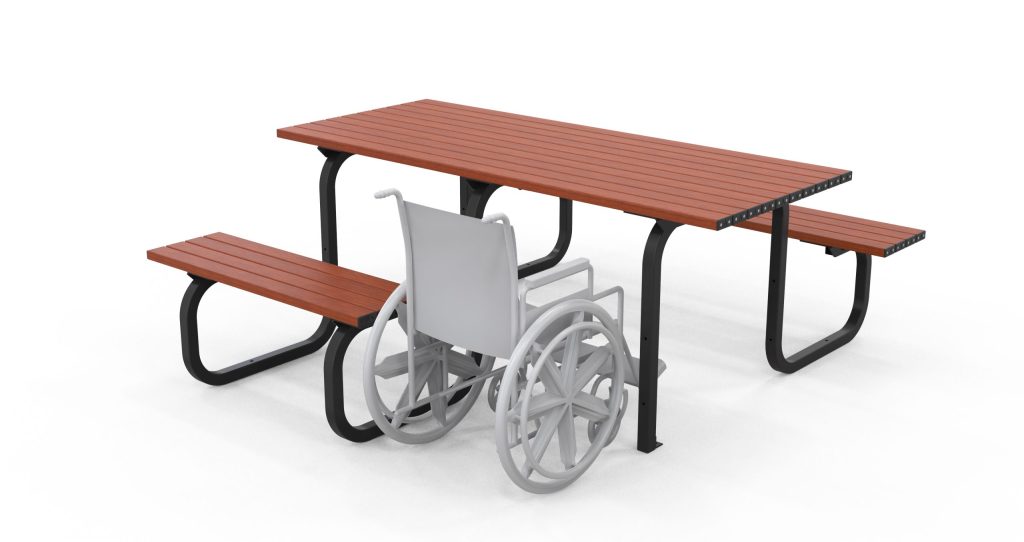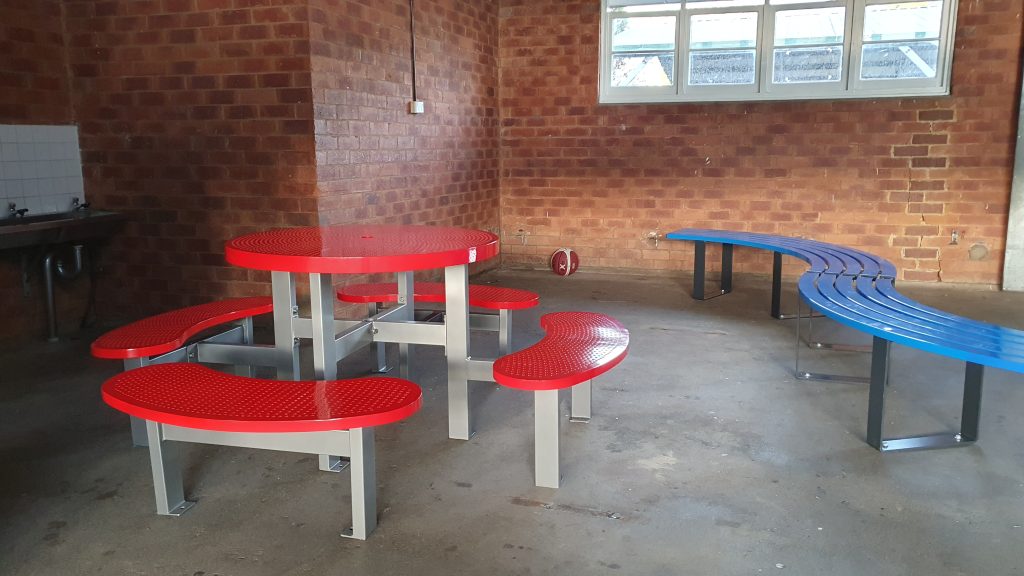
Spending time outdoors connects us to the places we live and for students, can result in better outcomes for learning and overall wellbeing.
In the 2018 Muddy Hands Report, 88 percent of teachers said that students are more engaged in learning when taking lessons outdoors. Spending time outdoors has been linked with improved mental and physical health for children and young people.
Read the latest print edition of School News HERE
A growing body of evidence also shows that access to green space such as parks, trees, shrubs and grass is linked to children’s healthy development and can offset the negative effects of traffic emissions.
However, creating the perfect outdoor setting for both educational purposes and for enjoyment during lunchtime and recess comes with specific considerations. Ensuring any outdoor space is both sustainable and accessible is more important than ever before.
Accessibility
Ensuring that outdoor furniture is accessible to all students, including those with disabilities, is a crucial aspect of creating an inclusive school environment.
Lindsay Stead from Astra Street Furniture said: “Outdoor furniture should always be inclusive and accessible to ensure all students can use it. [For example], has consideration been given to requirements for wheelchair picnic settings?”
With this in mind, it is essential to choose furniture that is easy to reach and use for students with mobility aids. This extends to students who may need mobility assistance for a short period of time, for example, while recovering from an injury.
This includes tables with sufficient clearance for wheelchairs, benches with armrests to assist with sitting and standing, and seating at various heights to accommodate different needs. Pathways leading to outdoor seating areas should also be wide enough for wheelchair access and made of a smooth, non-slip surface.

Schools should also consider the placement of outdoor furniture to ensure easy navigation. Integrating tactile floor indicators and clear signage can help visually impaired students navigate outdoor spaces more easily and ensure that students with mobility aids have clear signage to navigate the path.
Additionally, schools can work with disability access consultants or involve students with disabilities in the planning process to ensure that the designed outdoor space is truly inclusive.
Mr Stead also highlighted the importance of determining what the primary use of the outdoor space will be, as this will guide the design process and furniture choices.
“Different configurations are needed for different social situations or outdoor learning styles,” he said. “For instance, does the teacher or carer need to sit opposite the wheelchair, alongside the wheelchair, or at 90 degrees to the wheelchair?
“For outdoor classes, how many students need to group together at the one table? All of these questions need to be asked before accessible outdoor furniture is purchased.”
Sustainability
With increasing pressure to reduce our carbon footprint and model sustainable practices to the next generation, schools must prioritise environmentally conscious choices.
To make sustainable decisions about outdoor furniture options, Mr Stead said schools firstly need to carefully consider the real and measurable green credentials of a supplier including the six pillars of sustainability.
“Is the product Australian Made? This reduces freight emissions.
“What percentage Recycled Content does it have? This means that less raw materials are required.
“What is the Lifecycle Expectancy? Longer life equals less wastage and less products need to be manufactured.
“Can the product be repurposed at end of life? This means that less products need to be manufactured.
“What is the product’s Carbon Star Ranking? Have you selected a high-ranking product with low carbon by comparison?
“What is the Carbon Content Score of the product measured in kilograms of CO2 equivalent? A low carbon score means that less off-setting will be required to achieve Net Zero.”

Choosing furniture made from recycled or sustainably sourced materials is one way to reduce the environmental impact, for example, furniture made from recycled plastics, reclaimed wood, or certified sustainable timber. Additionally, selecting furniture that is made from durable materials such as aluminum, can help reduce waste by minimising the need for frequent replacements.
Schools can also look for furniture with modular designs that allow for easy repair and replacement of parts as required, extending the overall life of the piece.
Another consideration is the manufacturing process. Schools should seek out products from manufacturers who prioritise eco-friendly practices, further supporting sustainability goals.
Finally, schools can incorporate greenery around their outdoor space by planting trees, native plants and shrubs or building a community garden.
Incorporating accessibility and sustainability into any the design of any outdoor space can help schools create an area that will provide longevity, and remain an important feature in the school for years to come.







